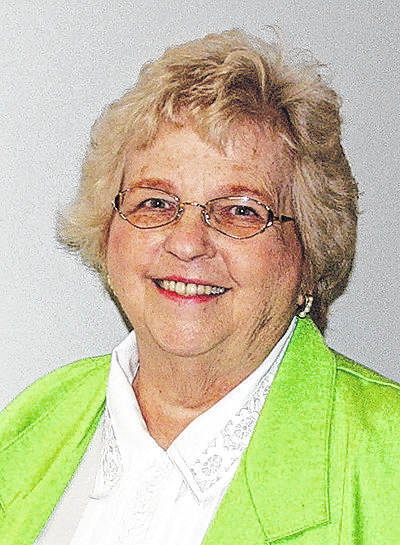
Once again, it is almost time for the Greene County Fair. This is certainly one of the highlights of the summer season.
Dill’s History of Ohio states that the Greene County Agricultural Society was formed in 1837 or 1938 for the encouragement of agricultural and mechanical pursuits. However an entry in the Greene County Commission Journals gives the following report dated June 1833.
“It was ordered by the commissioners that notice be given in the Xenia Territory this week that there will be a meeting held at the court house in Xenia on the last Friday of June, for the purpose of organizing an agricultural society, to be entitled the Greene County Agricultural Society.”
We do know that the first fair was held on the court house lawn. Residents were pleased with the event and it was determined that a site should be selected for future fairs. A little less than six acres was secured on Columbus Pike but by 1867, the site was not adequate and so the present site was purchased (36.3 acres) from Richard Galloway. During the Civil War, the Columbus Pike site was also utilized as a training ground for new soldiers.
In 1863, the fair was held Sept. 8-10. Today the dates for the fair are determined well in advance and no county may have a county fair the same week as an adjacent county. That year an advertisement in the local paper stated that “We think Greene County can beat any other county in the state in showing fine livestock.”
This is a listing of the exhibits for the 1870 fair: Thoroughbred horses, saddle horses, general purposes horses, and sweepstake horses, draft horse, roadster horse, stallions, mares, filly, gelding and broad mare with colt by side. Included were jacks and mules, cattle, short horn, fat cattle, graded and native cattle, sweepstakes cattle, along with swine boar, breeding sow, pigs and, sweepstakes swine.
Carriages, wagons, and sleighs along with farm implements and cabinet ware which included a set of parlor furniture, bedroom furniture, a bureau, sofa, lounge, set of parlor chairs, set of dining room chairs, extension table, etc., were displayed along with tin ware and stoves.
Farmers also brought long wool, fine wool, poultry, flour, meat, grain and seeds, dairy products, dry fruits, and leather and leather products. The distaff side was not neglected with bread, cakes and sweet meats, ornamental needle work, pickles and catsup, tailoring, flowers, amateur and professional flower arranging all shown.
Miscellaneous items included bee hives, portable engines, specimen or marble engraving or sculpture, Scotch granite headstones or monuments, brooms, specimen of twine and pharmaceutical preparation, painting and drawing, and preserved air-tight fruits and jellies.
By 1874, an addition 20 acres of land had been purchased.
Unfortunately, the agricultural society ran into a financial deficit and the property was purchased by Eli Millen, a local merchant. He was a generous man who rented the grounds on an annual basis so that the fair went on as usual. Eventually his heirs deeded the property back to the agricultural society.
Local folks could ride the train to the fairgrounds. A special train went from the Pennsylvania Railroad station on South Detroit to a stop at North Detroit and Fairground roads. Passengers needed to walk from Detroit to the fairgrounds.
In spite of wars and other challenges, the fair has continued to be held year after year. During World Wars I and II the fair went on, but not without concern for our fighting men. Any military person who was in the area during those times was admitted at no charge and encouraged to enjoy one of the delicious meals served in the dining hall. Everyone tried to help the war effort.
Horse racing has been a part of the fair for many years. The first races were a little different from today in that the race was against time and not competition and the rewards were small. Later well-known (for their time) horses such as Sleepy Tom and Ray Henley raced around the track.
Harness racing has always been a popular sport at the fair. Three special races (named for local men) have brought great pleasure to viewers. One was the Ray Henley Memorial Signature Series event.
The Steve Phillips Memorial Signature Series race is named in honor of the man who invented the starting gate. He was a trainer and starter for many years. It was difficult to line up the horses before a race and keep the line straight. The starting gate solved the problem and our Greene County born Steve gets full credit for the invention.
Local man Chip Noble was a noted racer whose life was cut short. The Chip Noble Memorial race was originally opened in 2015 for two year old fillies, but in 2017, horses four years and older were eligible but had to be sired and owned in Ohio.
September 2000 brought another change to the fairgrounds when a tornado damaged several buildings. Fortunately the fair had ended a few weeks previously, but the fair board had a major challenge in order to be able have the grounds ready for the coming year. The fair must go on, and extreme efforts were made to ensure that it would do so. Some of the buildings destroyed were older and more modern facilities were constructed.
See you at the fair!
Remembering Sam ‘Chip’ Noble III
A native of Greene County, Chip Noble learned horse racing from his father. Noble was the director of the Oho Harness Horseman’s Association and the United States Trotting Association as well as a member of the Little Brown Jug Society. In addition to harness racing, he was known as one of horse racing’s greatest ambassadors relating well with the media. He was a friend to many in racing. He was inducted to the Ohio Harness Racing Hall of Fame. He died in 2014 at the age of 60.
— Joan Baxter
Joan Baxter is a Greene County historian and resident.

